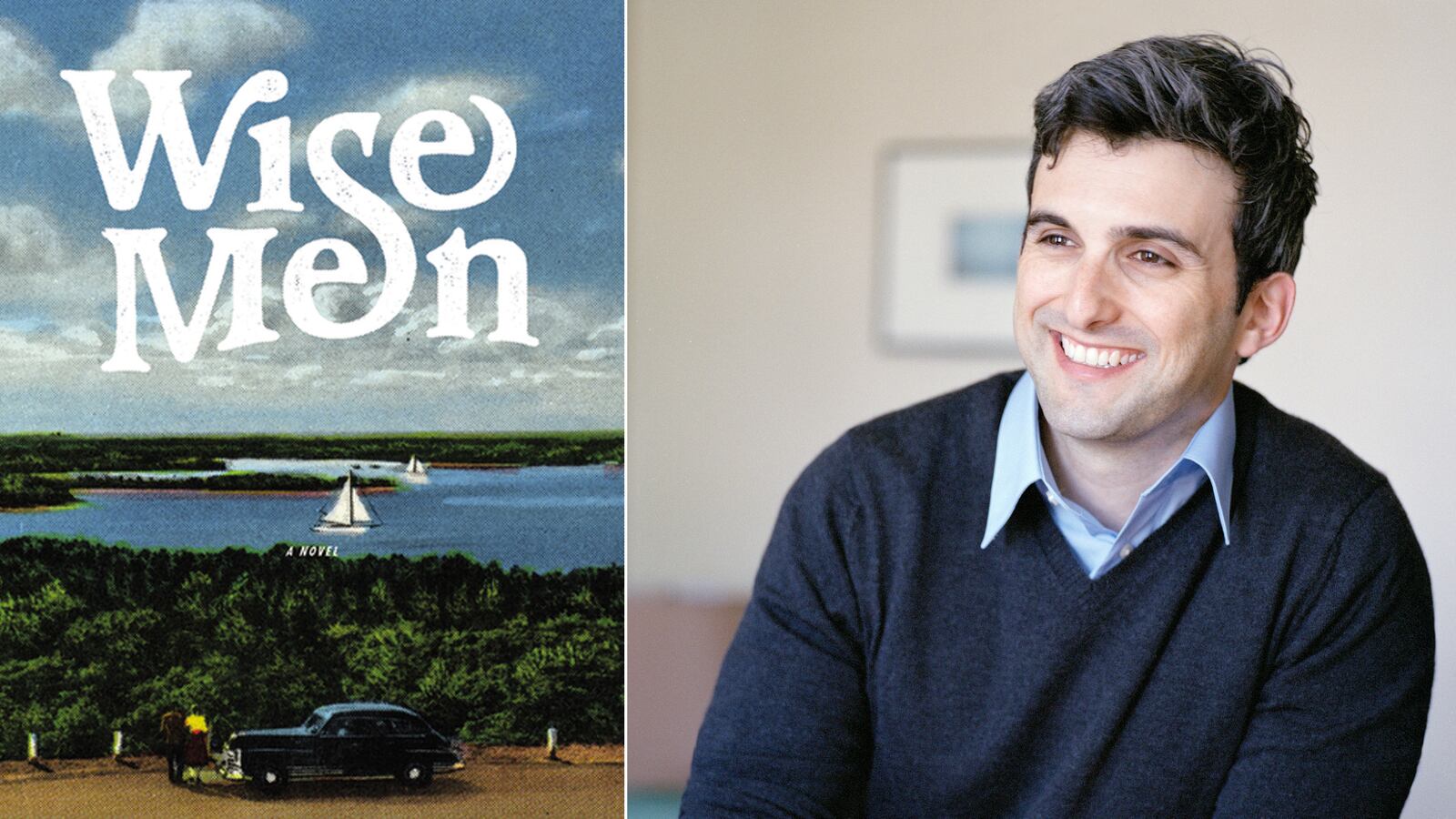Stuart Nadler’s debut novel, Wise Men, reminds one of the ache elicited when a book cloisters realities within intricate plotting, the ineffably human carried by artifice. For all of Wise Men’s meticulously conceived structure, the feeling it creates is a simple one: plaintive wonderment at how strange and unfair it is that things should be the way they are.

It’s not until the very last heart-rending paragraph that the true shape of the plot is unveiled. There are few overt clues to this revisionism until the end, and so the massive twist turns everything on its head but makes complete sense and informs much of the monstrous actions that had come before. The reader is cast immediately back into the book looking for clues, hoping to find a way to change the outcome for the better. Alas, though, as the narrator said in reference to his glossing over the better periods of his life, “What’s the point of reading a happy story?”
For a moment, it seems the story might be one we’ve seen before: a wise black man teaches a wayward white family some broad lessons about the evils of racism or the dignity of how the other half lives. The novel opens with Arthur Wise newly wealthy from litigating a watershed class-action lawsuit against Boston Airlines—one of their planes went down into the Narragansett Bay. He moves his family into an idyllic Cape Cod beach house, and still in residence on the grounds is Lem Dawson, the black caretaker—or “houseboy,” in the embarrassing parlance of the time—left behind by the previous owners. Soon Arthur’s son Hilly, providing narration, strikes up a friendship with Lem.
But Nadler has set up the reader’s expectations just to knock them down, and the plot quickly begins to darken and complicate, diverging from that potential Hallmark narrative as if in an alternate entropic universe: Hilly catches Lem reading and archiving his father’s private legal papers, and, in a moment of moral failure masquerading as righteousness, tells his father. The morality here is cloudy; Arthur is racist and abusive toward Lem, and Hilly knows that Lem’s punishment will not be commensurate with the crime. It’s just that Hilly subconsciously craves revenge on Lem for discovering him in a car with his niece, Savannah, with whom Hilly seemed on the verge of a forbidden summer romance.
The embers of guilt over the entire episode are placed deep within Hilly, where it will smolder for the rest of his life. Parts II and III of the book check in with Hilly at his middle and then late age, first as a reporter on the “race beat” and then as a doting father, and we find him consumed with not only the memory and pursuit of Savannah, but also the idea that along with his wealth should come the privilege of righting every injustice that he encounters, racial or otherwise. Nadler subverts the potentially familiar plot once again, dispelling with a penstroke the possibilities for star-crossed love.
It’s a bit of a stretch for Hilly’s entire life to be dominated by Savannah after meeting briefly only a handful of times. Nadler is also intent on treating his characters equally, regardless of race, so that it’s almost as if Hilly is preternaturally colorblind to the point of having no opinions.
But if the book has any real major flaw, it’s this: Hilly’s life goes so awry after the tightly plotted Part I, spiraling so far outside of the various familiar narratives that we might have predicted for him, that it’s easy for the reader to see the different form that the book could have taken, and in turn fall into the trap of thinking that that’s the form it should have taken.
Nadler, however, knows the real truth about life, and about the folly of attempting to conceive of reality in the same way as the fictional narratives that surround us. Though he might not give you what you want, he gives you what you need.






